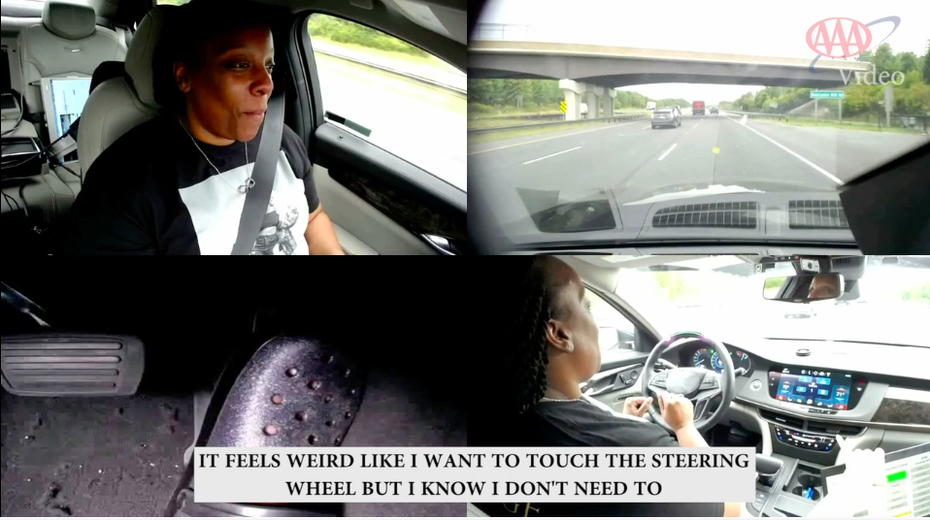Does it really matter if Tesla’s advanced driving system is called “Autopilot” but it doesn’t actually take over driving?
A new American Automobile Association (AAA) study released late Wednesday found that, actually, yes: What we call the programs and systems in our vehicles actually matters.
Tesla’s Autopilot is a highly automated feature that keeps drivers centered in the lane, automatically brakes, and maintains driving speeds, but it can lull drivers into complacency, even when they’re still supposed to be paying attention. Tesla technically requires hands on the wheel and eyes on the road while using Autopilot.
The AAA Foundation for Traffic Safety, a nonprofit research group within the car association, had 90 participants from the Washington, D.C., area learn about and then use what they were told were two different driver-assistance systems.
One was called “AutonoDrive” and the other “DriveAssist,” both fake names used in a disguised Cadillac running General Motors’ hands-free, eye-tracking Super Cruise advanced driving system. Super Cruise is a driver assistance program built into newer GM vehicles that lets drivers take their hands off the wheel and foot off the pedals on highways across the U.S. and Canada.
For the study, AutonoDrive training with a booklet, video, or in-person demo emphasized what the system could do for the driver, while DriveAssist training focused on system limitations and how the driver was still responsible.
Lo and behold, the autonomous-sounding name made participants think they could do a lot more in the vehicle and that the car would do more automatically.
Over 40 percent of AutonoDrive drivers thought the car would do something on its own to avoid crashing into another car, while only 4 percent of DriveAssist users thought so. The same kind of numbers applied for activities like eating or using a cellphone while driving: 65 percent and 45 percent thought the AutonoDrive car would take over driving in those scenarios, respectively, versus only 27 percent and 13 percent with DriveAssist.
When asked about the names of the systems after their test drives, 42 percent of the AutonoDrive users thought it sounded more capable than it actually was. For DriveAssist users (remember it was the exact same assistance tool) only 11 percent thought the system capabilities were overemphasized.
Here’s the footage from several of the test drives each participant took on a 31-mile stretch of highway in Maryland. You can see the different reactions from the drivers as the car keeps up with the flow of traffic or handles a curve on its own. They’re noticeably influenced by what they’re told the autonomous system is called:

The issue behind problematic names like Autopilot and Nissan’s ProPilot Assist came up earlier this year when the Associated Press updated its style guide on how the overall system should be labeled.
“Some vehicles have driver-assist systems that can perform tasks such as changing lanes, driving at low speeds, or keeping a safe distance from vehicles ahead of them, but they still need human supervision. These should be referred to as partially automated,” the AP says.
When we call something that requires driver attention “semi-autonomous” it perpetuates misconceptions of how capable the system really is. That’s how you end up with drivers watching Harry Potter while on the highway. So even if driver-centric names are boring and less flashy, they’re safer.
